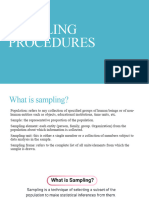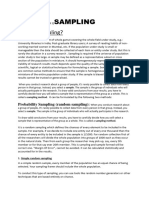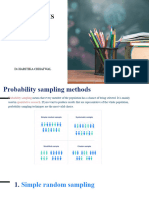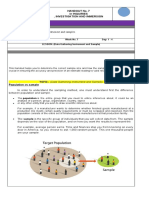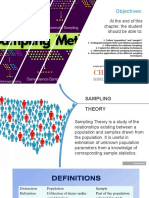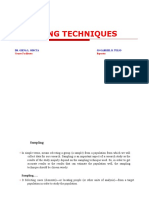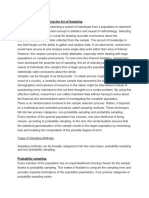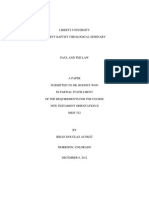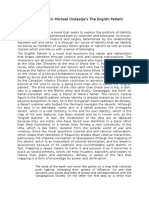0% found this document useful (0 votes)
14 views5 pagesDS Module 03
The document discusses various sampling methods used in statistics, including sampling from finite and infinite populations, and different sampling techniques such as simple random sampling, stratified random sampling, cluster sampling, systematic sampling, convenience sampling, and judgment sampling. Each method is explained with examples to illustrate their application and significance in ensuring representative samples. The document emphasizes the importance of choosing the appropriate sampling method based on the population characteristics and research objectives.
Uploaded by
Adiba KhanCopyright
© © All Rights Reserved
We take content rights seriously. If you suspect this is your content, claim it here.
Available Formats
Download as PDF, TXT or read online on Scribd
0% found this document useful (0 votes)
14 views5 pagesDS Module 03
The document discusses various sampling methods used in statistics, including sampling from finite and infinite populations, and different sampling techniques such as simple random sampling, stratified random sampling, cluster sampling, systematic sampling, convenience sampling, and judgment sampling. Each method is explained with examples to illustrate their application and significance in ensuring representative samples. The document emphasizes the importance of choosing the appropriate sampling method based on the population characteristics and research objectives.
Uploaded by
Adiba KhanCopyright
© © All Rights Reserved
We take content rights seriously. If you suspect this is your content, claim it here.
Available Formats
Download as PDF, TXT or read online on Scribd
/ 5



